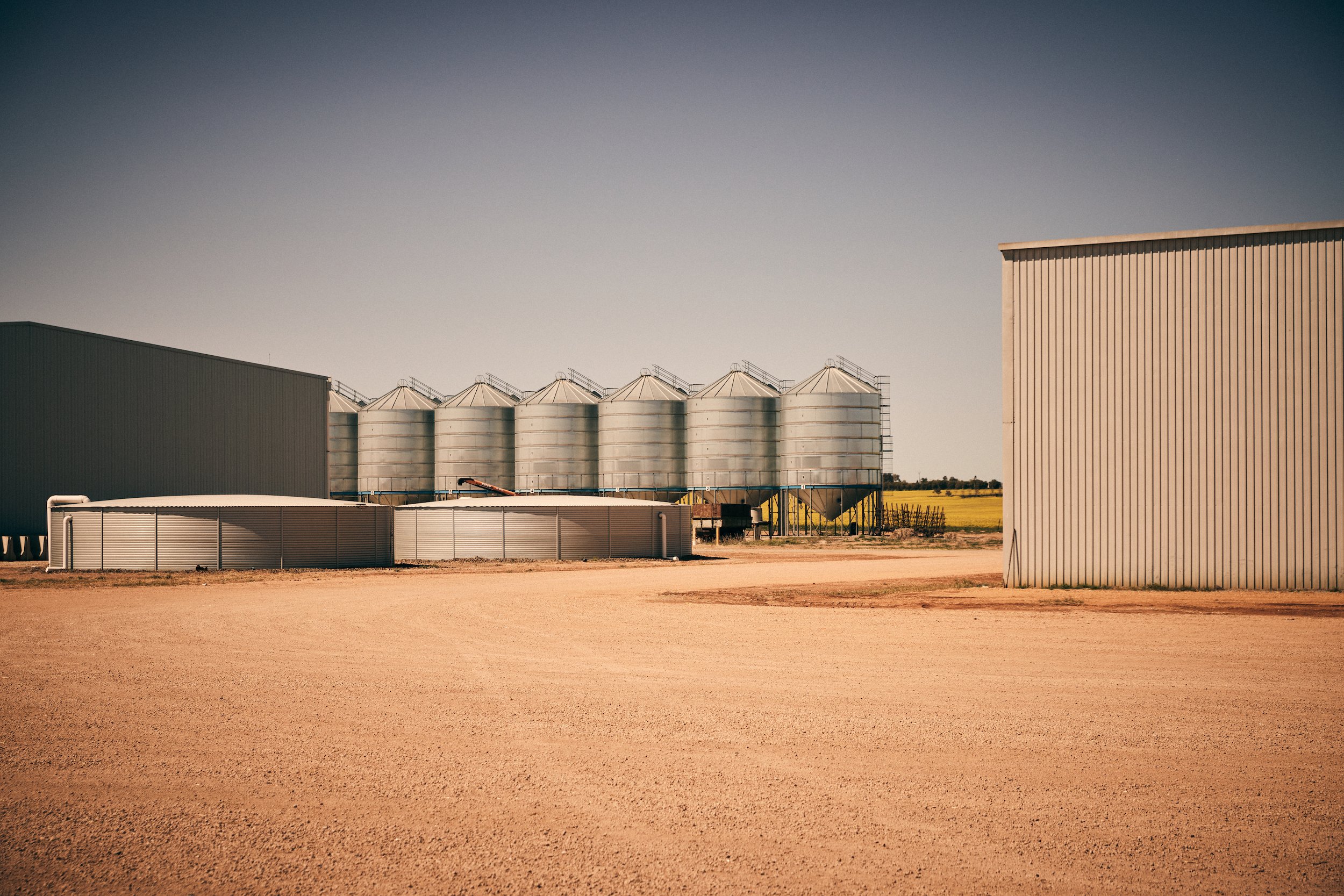
ROYALTIES
EPR Audits can reach back 7 years.
IT IS TIME TO ACCURATELY DECLARE.
We know this can be a difficult process, so we are providing an opportunity for growers themselves to review their End Point Royalty (EPR) declarations and payments back to the 2020 crop. We are asking you to check your previous declarations by requesting a personalised link to the platform provided by LongReach Plant Breeders and pay what was missed by February 2025.
Audits will be ongoing and are all about making sure growers are doing the right thing and paying their EPRs to ensure the industry can continue to thrive. It is also about recognising the growers who are paying and are currently carrying those who don’t.
Why do I have to pay EPRs?
Most current varieties associated with open pollinated crops (such as wheat & barley) are protected by plant breeders rights (PBR). i.e. the breeders have been granted PBR prior to releasing the variety. Most plant breeders or licensed royalty collectors utilise an industry standard variety license which outlines the terms on which growers are permitted to use their varieties. One of these terms is providing information relating to harvested crop. National Grower Register (NGR) has been commissioned to do this on behalf of most plant breeders to minimise the forms that are needed to be completed. At the end of the harvest declaration period run by NGR, the royalty collectors pursue non returned declarations.
WHAT ARE WE LOOKING OUT FOR?
-
We are looking out for growers who have bought or delivered one of our varieties previously and have not declared since.
-
We are looking into EPRs paid on grain fed to stock on farm. These still need to be paid.
-
We will be checking if you have accurately reconciled payments for grain sold to other grain traders from GrainCorp warehouses; not all grain buyers auto deduct EPR’s.
-
We are looking for reduced royalties compared to previous years.
BETTER UNDERSTANDING YOUR EPR OBLIGATIONS
3 KEY TAKEAWAYS
We are well into our industry audits.
Here are three key takeaways from what we have learned.
WHAT ARE YOUR VARIETY LICENSE OBLIGATIONS?
Each year, you must provide your harvest information by April 30th or within 30 days of a request from a LongReach representative. Be proactive - ensure your declarations are accurate and up to date.
AUDITS WILL BE ONGOING
Not everyone is paying their EPRs. Those professional growers who do the right thing are essentially carrying those who don’t and that’s not fair. It’s become such an issue that industry audits will now be ongoing - to protect the industry and put non-compliant growers on notice. Penalties for unpaid EPRs can be steep, with auditors able to go back seven years to reclaim unpaid EPRs - with interest.
WHEAT BREEDING RELIES ON EPRs being paid
Avoiding End Point Royalties? Be prepared for an audit. As an industry, we can’t compete - or survive - without them. Whether it’s accurate financial reporting for your business or the ripple effect on your mates, neighbours, or even your family farm, End Point Royalties are critical for funding wheat breeding.
END POINT ROYALTY FAQS
-
You have an obligation, and we need it to reconcile payments.
Reconciling Payments
As a royalty collector, we do not have information on all grain sales made by growers. We don’t know if all sales have been through a grain trader that auto deducts. The Harvest Declaration is required to reconcile payments and ensure royalty is paid on all eligible tonnes harvested.Grower Obligation
Most current varieties associated with open pollinated crops (such as wheat & barley) are protected by plant breeders rights (PBR). i.e. the breeders have been granted PBR prior to releasing the variety. Most plant breeders or licensed royalty collectors utilise an industry standard variety license which outlines the terms on which growers are permitted to use their varieties. One of these terms is providing information relating to harvested crop. National Grower Register (NGR) has been commissioned to do this on behalf of most plant breeders to minimise the forms that are needed to be completed. At the end of the harvest declaration period run by NGR, the royalty collectors pursue non returned declarations.
-
Grain Levies paid to the Grains Research and Development Corporation (GRDC) are focussed in many areas such as agronomy, environmental challenges and pre breeding (trait development). But the GRDC does not breed or develop new varieties. In relation to pre breeding activities, GRDC funds are channeled through research organisations such as our Universities , Departments of Ag, or CSIRO. Once a trait has been developed, plant breeders such as LongReach Plant Breeders take up material from the researcher containing the desired traits and introduce them to elite germplasm (suited to region, high yield, disease tolerance and grain quality). This process takes approximately 10 years to ensure a high quality product for Australian growers. EPR’s are required to fund this stage of the germplasm development value chain.
-
No one likes paying bills, however here are some points we think make this a very fair system.
Seed is an input cost to your business like any other, however, with end point royalties , you pay after harvest, usually when you sell your grain or your payments have been reconciled.
EPRs are charged on a production basis, rather than a set fee. Accordingly, the quantum of EPR you pay is relative to your yield. You pay less in a poor year. Nothing harvested: nothing paid.
By aligning EPRs to crop performance, when varieties are superior quality and high yield, both growers and plant breeders benefit.
The majority of the value created by higher yield varieties goes back to growers who benefit directly from increased production.
If the EPR value capture model for Open Pollination plant breeding in Australia fails, the financial returns to plant breeders will be insufficient for plant breeders to develop new high yield, superior quality varieties for growers. What is the likelihood of Government investing to the same level if we are unable to make this model work?
-
1: We can manage the genetics but not the environment: As breeding organisations, we develop varieties that have the genetic capability to deliver on yield, disease tolerance and grain quality in specific regions. We try to make these varieties as robust as possible, however, in Australia’s environment, we all know there are extremes that can bring us undone. Ultimately, the final result is a function of Genetics x Environment (GxE). Our promise is that genetically, our material can deliver a result given a suitable environment.
2: Our pricing is already low: As a % of cost / ha relative to crop revenue, EPR (your seed input cost going to the breeder) is approximately 1%.
-
1: Compliance has slipped significantly in the Eastern States. For the 2021 harvest, compliance has fallen to 46% in Qld and 74% in NSW. Without full compliance, LRPB will not be able to operate in these regions, and will be under pressure to focus resources in other states.
2: Audits are common place in other Ag industries to ensure compliance such as the fruit industry and cotton. It is now clear that there needs to be checks in place to ensure this value capture model is protected in broadacre cropping.
-
LRPB will be sending out a form for growers to check and update information going back to the 2020 crop season. We realise it can be difficult to reconcile payments and are keen to help where we can. Please contact info@longreachpb.com.au for more information.
-
Audits will commence in November 2023. We know that harvest and planting are critical periods, and planning will attempt to minimise audit activity during these critical periods. Audits will be planned as an ongoing process and will become “business as usual” to ensure compliance.
-
We know it can be difficult to track varieties at harvest. As a rule of thumb, we would hope declaration accuracy is within a range of +/- 5% of the actual harvest volumes.
-
There are several reasons why this is difficult:
We are businesses, with different structures, a mixture of public & private investors & various channels to market. Setting EPR prices across all organisations could significantly constrict some business models. Maintaining a diversity in models creates strong competition between breeding companies and ultimately the grower benefits.
Access to new traits is costly to plant breeding programs. In many cases, royalties need to be paid back to the respective research partners. These costs vary and need to be reflected in EPR pricing.
New varieties deliver varying added value to the industry. Pricing needs to be able to reflect this.
-
Most open pollinated crop varieties available on today’s market are protected by Plant Breeders Rights (PBR).
PBRs give the PBR owner the exclusive right to do various things with the propagating material of the protected plant variety, including to produce, reproduce or sell the propagating material. It also gives the owner the exclusive right to license others to do those things.
Varieties with PBR protection therefore require permission from the PBR owner to use their PBR protected propagating material such as germplasm. The grower variety license is a document that facilitates this permission. Growing a PBR protected variety without a license is an infringement of the PBR owner’s rights and in breach of the Plant Breeder’s rights Act (Cth) (PBR Act).
Varieties have been released under the PBR Act since 1994. There is high awareness of this obligation throughout the industry.
-
Yes, EPR is payable on all production other than that retained for seed.
-
We understand this is difficult, but it is your responsibility to keep accurate records of any PBR’d variety. We are keen to work with you to provide solutions to make this easier but ultimately, this is your responsibility. If a local grain trader failed to pay you for your deliveries because they felt it was too hard to keep track of everything that came in, you would be understandably upset. So are we!
-
Not all grain buyers auto deduct. If you sold to Graincorp from the Graincorp warehouse, they will have deducted the EPR. If you sold ex the Graincorp warehouse to another trader, your EPR may not have been deducted. In this case, you may still owe EPR.
-
No, several members of the plant breeding industry are about to begin audits to improve compliance.
-
Reconciling can be relatively simple. We take your declared tonnes by variety and deduct all volume where payments have been made through either grain trader auto deductions or invoiced directly to you.
THE IMPORTANCE OF PLANT BREEDERS’ RIGHTS.
Australia was one of the last developed economies to introduce legislation that protected the intellectual property rights of plant breeders. In 1994, the eventual introduction of an effective Australian Plant Breeder’s Rights (PBR) Act in 1994 has since encouraged private investment.
The horticulture, floriculture, pasture seed and tropical crops sectors were quick to access elite international germplasm, whose owners had previously declined Australian opportunities due to the lack of protection offered for their property rights. These rights are recognised internationally under the UPOV Treaty conventions, of which Australia is now a signatory, and its benefits have spread across all sectors, as seen in the range of products available in today’s market. You can find out more about plant breeders’ rights here.
A BRIEF HISTORY
When you are buying LongReach seed you are investing in a breeding program that is laser focussed on one thing; wheat. The End Point Royalty (EPR) structure is what allows breeding programs like LongReach to continue to deliver innovative breeding programs and products, and in that focus on what farmers actually need.
Why do I need to complete a harvest declaration?
Reconciling Payments: As a royalty collector, we do not have information on all grain sales made by growers. We don’t know if all sales have been through a grain trader that auto deducts. The Harvest Declaration is required to reconcile payments and ensure royalty is paid on all eligible tonnes harvested.
A growing sector
Progress in private investment for broadacre, open-pollinated crops, such as wheat and barley, has been much slower. But momentum is building quickly, especially with the GRDC announcing in 1999 that, as a result of sector-wide reviews, it would not continue to support the traditional plant variety breeding agencies beyond 2005. This decision paved the way for new, commercially focused and internationally connected operators such as LongReach.
Sector consolidation is now accelerating. Elite proprietary genetic material with a wide spectrum of disease resistance and quality traits is now available to Australia as it never has been before. You can get more information on GRDC reviews of the performance of the Australian cereal-breeding sector on their website.



